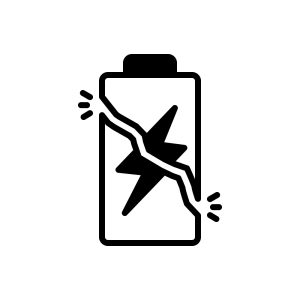What is the cost if you overcharge an electric bike?

The electric bike’s battery is one of the vital parts of the bike. It provides energy to the motor to control the bike. Working the motor and the other electrically connected parts of the bike without the battery is nearly impossible. So, it is crucial to take care of it.
The batteries, at the time of patent given for electric bikes, were expensive and heavy. It took almost a century to regain the electric bikes’ diminutive popularity as gadgets and machines were dropping off in weight and price. In two decades, electric bikes’ fame spread wide, due to the availability of cheaper batteries that made electric bikes affordable.
In these two decades, many changes have been made to electric bikes and their parts. Though the motor and the controller did not go through much evolution, the battery did. From weighing batteries with a short life span to low weight with a long life span, the battery has evolved. The main batteries used in electric bikes are;
-
Lead Acid batteries

Lead acid batteries are heavy and large, thus making them hard to place in an electric bike. It does not come in any electric bike mounting hardware, therefore making it hard to attach it to the bike. It is cheap and you can find them in any local store. They have the potential to discharge huge amounts of power, though they have a shorter life span.
Lead acid batteries come in two packages: sealed lead acid and wet cell lead acid.
Sealed lead acid batteries are the best choice for electric bikes as they come in a sealed hard plastic box. This retains the battery from leaking due to moving in all directions. As there are chances for the bikes to turn over more than the cars, sealed lead acid batteries will be a good choice for electric bikes.
Wet cell leads acid batteries are a good choice for cars as they are inclined to leak if turned upside down.
-
Nickel-cadmium

Nickel-cadmium batteries are more expensive than lead-acid batteries but have more capacity. Though it is hazardous to the environment and hard to recycle. Because of this, it is losing its demand in the market. Even though nickel-cadmium batteries weigh less and last longer than lead-acid batteries, it is not a good choice if you are going green.
-
Nickel-metal Hydride

Nickel-metal Hydride batteries are environmentally friendly and can dispose of easily. They are more expensive than the prior, and a little more efficient, though there is not much improvement in the range.
These batters are highly tolerant of overcharging and low self-discharge.
-
Lithium-ion

Lithium-ion batteries are in high demand for their lightweight and long-lasting features. They are also small and do not demand more space. They come with bicycle mounting points and you could stack up two to three batteries on the go, without much affecting your range. As these batteries are expensive and high in demand, it increases theft.
There are three types of lithium-ion batteries, they are:
-
Lithium-ion polymer battery

Lithium-ion polymer batteries are small and cheaper than lithium-ion batteries. We can shape them into any form as they include a polymer. This battery’s life span is the lowest among its family and has a high chance of igniting if not taken care of.
-
Lithium manganese battery

Lithium manganese batteries are the newest battery introduced to the market. Among the other lithium-ion batteries, these batteries have a higher life span and durability.
-
Lithium cobalt battery

Lithium cobalt batteries are light and reliable. They have the highest energy density.
What happens when you overcharge your electric bike’s battery

An electric bike’s battery needs recharging regardless of the type, for the bike to function. Some batteries might take a long to charge while others take a short time. It is up to us to know the time taken to recharge and disconnect them when it has reached their maximum charging level.
When the battery reaches its full charge level, it receives more voltage which is not good for it in a long term. Ways a battery might overcharge:
- Charging the battery with the wrong charger with the difference in the voltage.
- Leaving the charger on for a long time even when it has reached its maximum limit.
- Connecting the charger often even with the slightest decrease in the battery level.
- Charging outdoors in extreme heat.
When electric power enters the battery, little by little it reaches each cell and wakes them up. Those cells react to the electric power and create the energy needed and stored it. These energies will be distributed when provoked by operating the device thus functioning the device. The batteries have a limit to which they should be charged and if it reaches that level, it is recommended to disconnect them from the electric power outlet.
If it is not disconnected, the current flow will overcharge the cells and the battery.
When a battery overcharges it might affect the battery and also the electric bike in the long run, so one should try as much as to not overcharge it. Here are some of the problems that might occur due to overcharging;
-
Damages the battery

When power to the cells keeps on flowing they overcharge themselves and begin to lose their properties. Though it does not show signs in near future, or if only you overcharge it one or two times, in the long run, if you do it too often, it will affect the battery. When the cells are damaged, it would worsen the battery’s capacity and lifespan.
The battery will not be able to hold the energy inside for a long time like it used to, because of the damage in the cells. The self-discharging percentage will increase and even if the bike is not in use, the battery will be weak.
When the battery’s capacity is declining, so does its lifespan. Lifespan is the time period you can use your battery until it loses all its properties. Due to overcharging too often, the battery will lose it all too soon.
-
Explore

Sometimes we forget to disconnect the battery from the outlet and leave it connected for days. This continuous flowing of electric energy would swell up the battery case. A swollen battery is hazardous and would explode in extreme heat. You should keep it in a safe place or dispose of it as soon as possible.
Sometimes, leaving in the charge for too long and overcharging can lead to exploding of the battery.
-
Damage the motor

Overcharging leads to the leaking of batteries. If not taken care of the battery before leaking, it might damage the system. The liquid would leak into the machine and damage the devices. It will affect the controller, the motor, and the sensors and they will malfunction.
If you happened to see a damaged battery, disconnect it and try not to ride using it. Check the battery now and then to know its condition.
-
Malfunctioning of the bike

When a bike’s battery is damaged, it is advised to remove it from the device, as it can slow down the bike or malfunction. Using a damaged battery for too long will worsen the battery’s condition and also the device. If the battery starts to leak, it will stain the device and make the device malfunction. Or if the battery has swollen using it might explode as heat can trigger the liquid to boil.
Taking Care of your Battery.

The battery is vital for the electric bike to function. The whole machine operates only with the power of the battery. So it is important to take care of the battery as much as the whole machine. A few ways to care for your batteries are:
-
Storing

It is important to know how to store a battery as it has a great impact on how long you can use a battery. Most batteries are removable and kept in a safe place.
If your electric bike will not be used for months at a time, it is advisable to remove it from the bike and store it in a safe place with at least 50% charge, due to the batteries inevitably discharging themselves. You should not keep it for too long without charge.
Store in a cool dry place as storing in heat might affect the battery negatively and if stored in wet places, the water would soak into the battery thus damaging it.
-
Charging

Electric bikes come with a charger designed for them and they should be charged using only that battery, or charger designed for them. Using alternative chargers or any other ways to charge electric bikes too often can damage them.
Do not overcharge your battery as it may reduce the capacity and the lifespan of the battery.
Charge the battery in a cool dry flat place. Charging in an extreme heat place has negative effects on the battery. Do not keep flammable materials near the charging points.
-
Maintaining

You should maintain the battery with care as it is expensive to repair or replace. It has a high chance of stealing so should keep in a safe place.
Charge the battery every time it is lower than 20% and leave it to charge fully. Do not charge too often for a few minutes as it can reduce its capacity.
Always charge or store in a dry place away from heat and water.
-
Loading

Though we can use electric bikes to climb up steep roads and carry goods from grocery and shopping, this has negative effects on the bike’s battery and motor. Too much load makes the motor provide more effort thus demanding more power. Too much power output will reduce the battery’s lifespan.
Future of electric bike’s battery

Just like electric bikes’ demand has risen in two decades, demand for the batteries too has increased. Manufacturers are trying to design and develop batteries with low cost and high durability and reliability. Many batteries have been introduced varying in size and services, and they are still trying to make them more advance.
Even with advanced designs and developments in two decades, we still have a few issues that the manufacturers are expecting to solve in near future. Some developments you can expect in batteries to come are:
-
Faster charging

We often forget to charge our electronic devices and only remember when we need them. With a slow charging pace, it would take time to charge and have to wait longer. It applies to electric bikes too. If there is an increase in charging speed your waiting period would lessen. For example, it if was taking 4 hours to charge the battery fully, it would take only 3 and half hours to charge in the future. Though it is not much, it at least saves a few minutes.
-
Disposable

Disposing of batteries is the worry of many as many of us have no clue what to do with the empty battery or worse damaged battery. A damaged battery is hazardous it should be taken care of as soon as possible.
Many manufacturers themselves urge the customers to return it to the retailers they brought the batteries from, who will return them to the manufacturers, where they will be taken care of by experts and recycled or disposed of. Leaving a battery in a damaged condition will be harmful and is advised against it. As there are few problems as to storing the battery at the retailers, storing it in a safe place and away from flammable objects, and doing the packaging with extra care, few matters are to be considered. Manufacturers are trying to find a way to solve this issue and we can expect to receive a positive result the problem of disposing of the broken or dead battery will find a solution soon.
-
Greater charging cycles

When using an electronic device with a battery, we expect it to last longer with every charge. The same applies to the electric bike too. With limited charging time, it is impossible to travel too far or for days if you doubt that you can charge your bike, or you have to take batteries with you. Improving it can increase your user limit with each charge and you can travel a little further.
Though rechargeable batteries are much better than non-rechargeable batteries as you can use them again and again by charging them, their charge reduces too quickly. And also with each charging cycle, capacity decreases.
With the new development, we can expect greater charging cycles that would increase the longevity of the battery.
-
Long lasting batteries

With the increasing price of electric bikes and their batteries, everyone wants a battery that lasts a lifetime. Though it is not possible, manufacturers are trying to increase the lifetime of the battery which would at least bypass its predecessor.
-
Size

Electric bikes are just like traditional bikes that have few features added to them. And these new gadgets like motors and batteries add weight to the already weighing electric bike. Carrying an electric bike on stairs would be exhausting and nothing like carrying a traditional bike. So many battery manufacturers are designing batteries with lighter materials with other positive effects. If the bike’s battery is smaller in size and weighs less you can carry one or two on your long journey and use them.
-
Cost

Though the batteries are designed and developed with many features, many would not be able to afford them due to their price. As it is produced using expensive and rare materials, the cost of production is also high, thus increase in the price of the battery. Manufacturers are researching and developing batteries with cheaper products that provide other features too.
Though these are a few solutions we can expect from the manufacturers for a few problems, we can expect more from them in near future.
